Worms! Wiggly, squiggly, creepy, crawly, long, dirty, slimy and slick; it’s no wonder that kids are fascinated with worms. From the time my son was 2 years old, digging for worms in our backyard has been one of his favorite things to do outdoors. He’s constantly amazed that worms live everywhere, right under our feet and are basically free for the taking! He now digs up worms from around the neighborhood and we add the worms to our garden, use them for composting and even collect them for fishing bait.
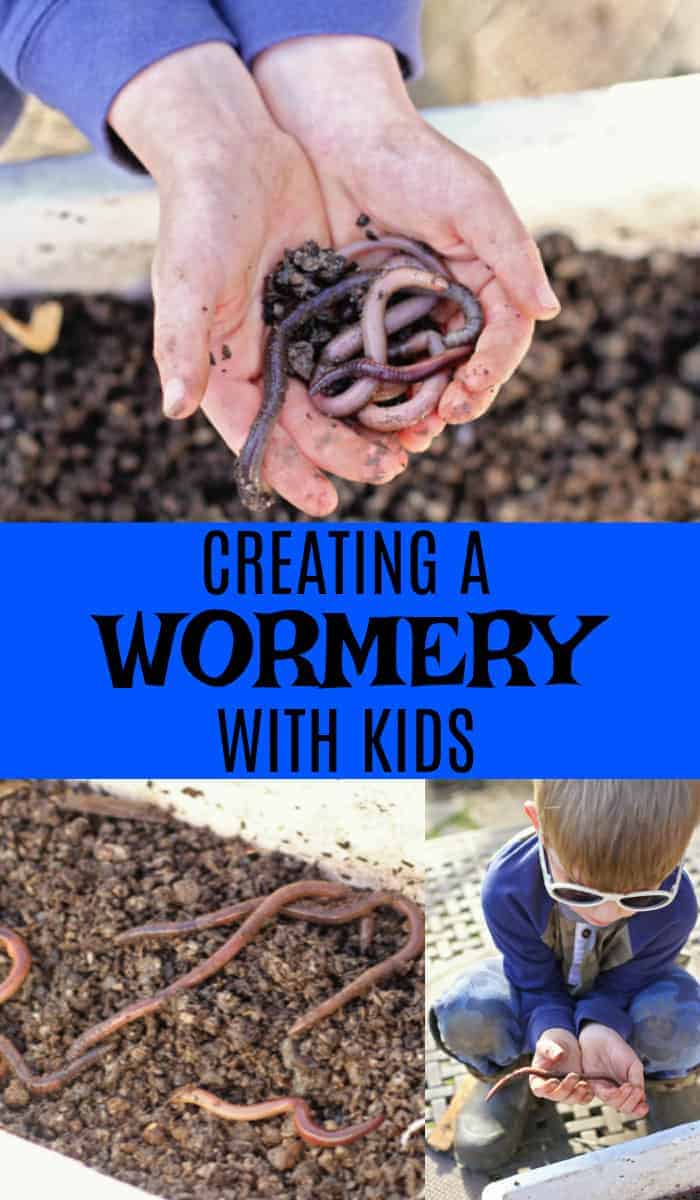
This past year we set up our own “wormery” in a box so we could observe and grow worms year-round. Not only does this allow us to keep a stockpile of worms for fishing, but we are able to compost some food scraps and add nutrient-rich composted soil to our garden for growing vegetables. We’re constantly adding worms to our wormery to replace any we use for bait and the kids love playing with the worms, watching how quickly they grow and caring for them.
I realize that not everyone is probably as crazy about worms as we are! If you’re already having a hard time reading this or looking at the photos, don’t worry, you’re not alone! But there are a ton of benefits to teaching children about worms and letting them touch them and observe them. Kids are naturally curious about nature and all animals, no matter how squirmy they are. I encourage you to try to put any squeamishness aside (believe me, kids will pick up on it) and allow your kids to get their hands dirty to learn more about these amazing creatures!

 Fun facts about worms
Fun facts about worms
Charles Darwin called earthworms “the intestines of the soil,” since worms can eat up to 75% of their own body weight every day, turning waste into rich and fertile soil. Worms play a crucial role in the environment by breaking down organic matter like leaves and grass into things that plants can use. When they eat, they leave behind castings that are a very valuable type of fertilizer. Here are a few other fun facts about worms that your kids might get a kick out of:
- There are over 6,000 different types of earthworms
- Worms have no bones or skeletons
- Worms do not have ears, a nose or eyes, but do have cells that can detect light
- The mouth of a worm is covered by a flap of skin so the worm doesn’t swallow everything
- Worms have a mouth, but do not breathe through it – it is just for eating
- The worm has 5 simple hearts, a stomach, and a gizzard
- The gizzard contains tiny rocks and sand that mash up the worm’s food, because worms don’t have teeth to chew it up
- An earthworm can have over 100 segments between its two ends
- Each segment has tiny little bristles that help the worm move and hold on to things
- All worms have a complete set of both male and female organs on the inside so there are no boy or girl worms
What’s a wormery?
A wormery is a place where worms can grow, compost and make more worms. A wormery will recycle food waste into superb fertilizer for your garden or yard. Wormeries are also great for growing and storing worms to use for bait when fishing. Wormeries can also be used at home or in classrooms for observing the life cycle and work of worms. After a few days/weeks, the worms and soil can be returned to your yard or garden.
Wormeries are perfect for small spaces: they’re compact, don’t smell and make compost faster than conventional composters.
Wormeries come in a variety of types and sizes. Even Amazon offers a number of different types of wormeries, from fancy multi-level worm composting factories, to simple Styrofoam worm boxes (this is the one we have), to kid-friendly worm-observation kits. Although, it’s also just as easy, fun and rewarding to make your own from supplies you probably already have at home.
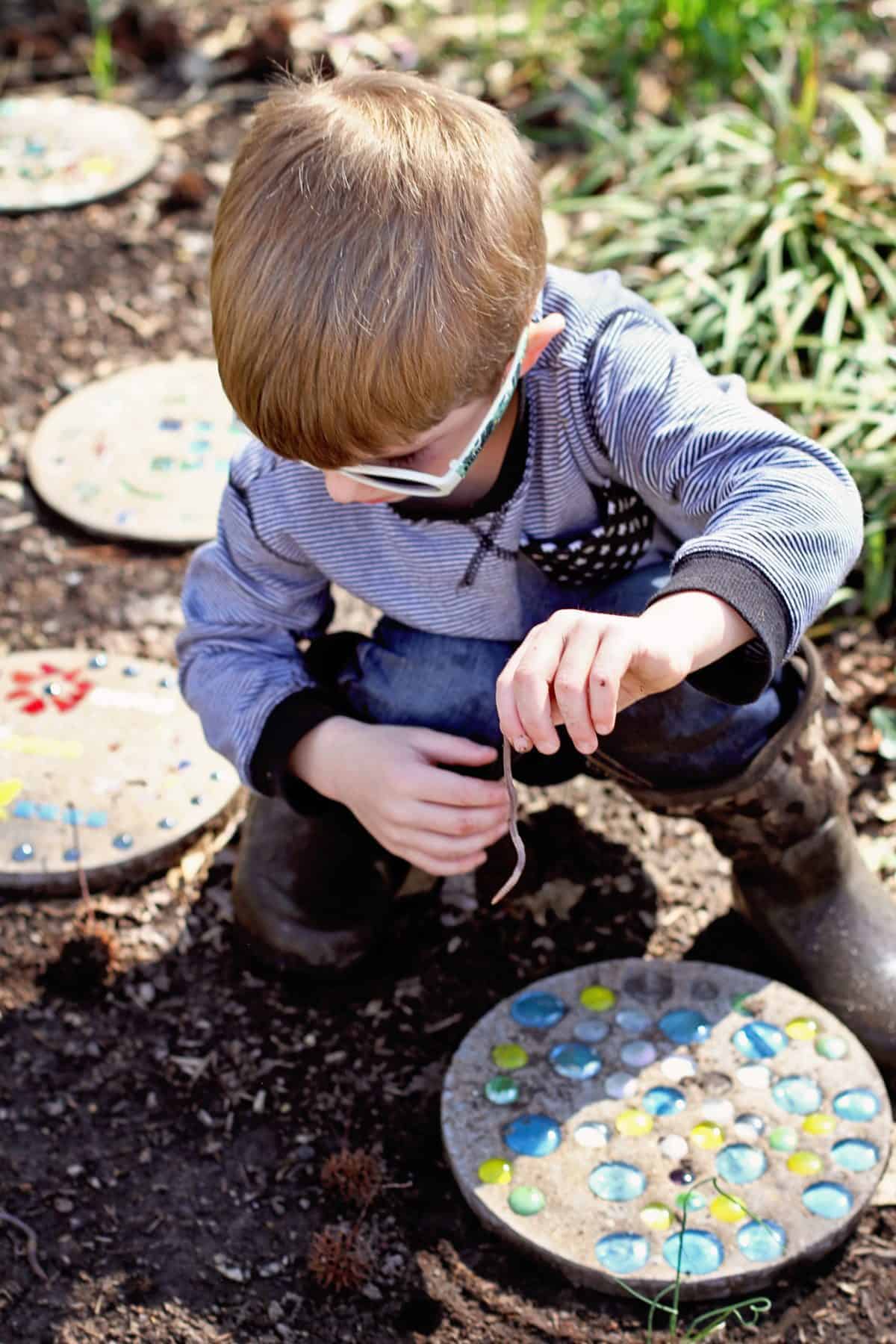
Wormery supply list
Building a wormery is pretty simple because worms only have a few very basic needs: (1) worms need food (they eat microbes found in dirt and rotting material); (2) they need a moist (but not wet) dark environment; and (3) they need air (they breathe through their skin).
To build your own wormery, you’ll need the following items:
- a container with a lid
- shredded newspaper or bedding
- soil, sand, rocks/gravel
- worms
Choose the proper container
There are a ton of different containers you could use to make your wormery – anything from a bucket to a rubbermaid container to an old styrofoam cooler. Worms are active on the top layer of soil, so your container doesn’t need to be very deep. A lid will keep the wormery dark and prevent any worms from escaping. Just make sure to poke or drill some small holes in the container and lid to ensure they get plenty of air.
Worms like the dark, so if you’re going to be keeping your wormery for a while, make sure you use a container that will keep the soil dark. However, if you’re building a wormery specifically for kids to observe the worms, use a transparent glass container or plastic jar/bottle (an empty 2 liter soda bottle works great) and cover it with dark construction paper during the time while the kids aren’t watching them.


Prep the wormery
Put a small layer of rocks or gravel at the bottom of your container. This helps with drainage and gives the wormery a solid base to prevent it from tipping over. Next, shred up some black and white newspaper to place in the bottom of the container as bedding (or you can buy worm bedding). Spray the bedding with enough water to dampen it, but make sure it’s not too wet. It should feel like a damp sponge or wrung flannel. Once the bedding is made, add some gardening soil or worm compost and give it a good mix.
Finish by putting some dead leaves or vegetable scraps on top of the soil. If your dirt mixture is really dry, add some water to your container as well – just enough to make the soil damp, but not soggy.
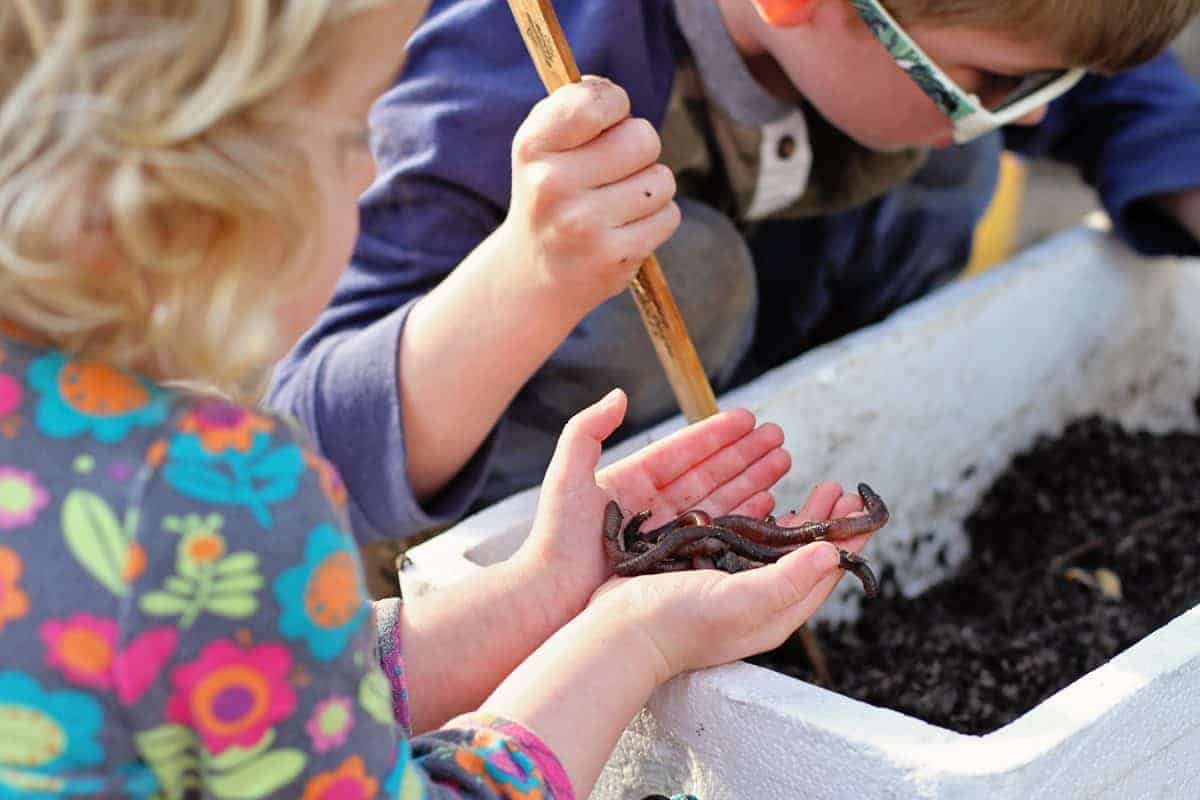

Find your worms
This is the part that kids love the most! Let your kids search and dig for worms to add to your wormery. Search damp and dark spots in your yard or local park. Lift up rocks, look under bushes, dig beneath piles of leaves. Worms will be easier to find and closer to the surface after a light rain. You might even find them trying to cross the sidewalk. If you can’t find any, you could always snag some at a local bait shop or even order them online. Red worms work the best for wormeries, but if you’re building this mainly for observation or fun, use any worms you can find.
This is an excellent time to talk to kids about how to handle the worms and the anatomy of worms. Let the kids touch them, hold them and observe them. Talk about how important it is to be gentle and respectful of your worms. Don’t let small kids injure the worms or cause any undue stress or damage to them.
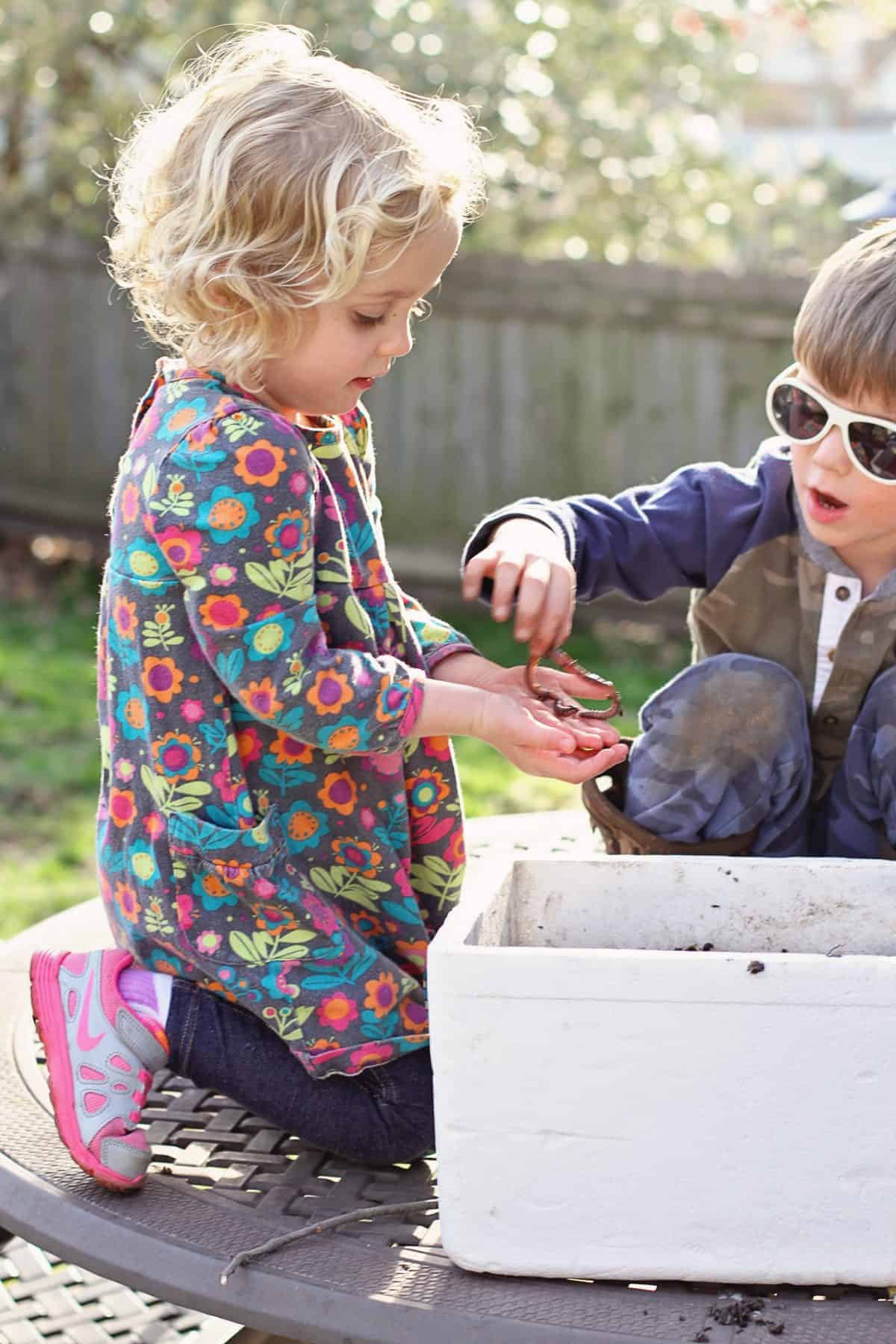
 Add your worms
Add your worms
Add the worms to the top of the bin and allow them to dig down. Do not try to assist them with burrowing because it will scare them. It can take up to a day for all of the worms to burrow down. Any worms that do not go down after being there for a day or two are dead or weak and should be removed. If you think you’ve found a dead worm sprinkle it with a little bit of warm water. If that doesn’t revive them, the worm is dead or dying and should be left out of the wormery.
 Feed your worms
Feed your worms
Once you’ve found worms and added them to the wormery, you’ll need to feed them occasionally. Worms can eat up to two times their body size every day so always feed them according to the amount they’ll eat. However worms can last their entire lives feeding only off of nutrients in the soil so food is always extra.
Have your kids save their fruit and veggie peels and scraps to feed the worms. This is a fun way for them to care for the worms while also finding a use for the scraps. Let kids add scraps such as apple cores, banana peels, or pears to the wormery daily. Do not use meat, poultry, fish, dairy, potato chips, candy, oils, oranges, lemons, and limes because these are not good for the worms. Food will grow mold if left uneaten for a while if you find a piece of food that is moldy remove it. If you don’t want to use actual food scraps, you can also buy worm food.

 Keep them damp, dark and cool
Keep them damp, dark and cool
Worms prefer cool temperatures, so keep them indoors in a cool dark place. A basement or a refrigerator is perfect. In addition to adding food periodically, make sure you add some moisture so the soil/bedding doesn’t dry out. Compost will be ready in 2-3 weeks.
If you have a transparent wormery for the kids, observe it indoors for a few days and then carefully dump it outside in a shady spot in the early morning.
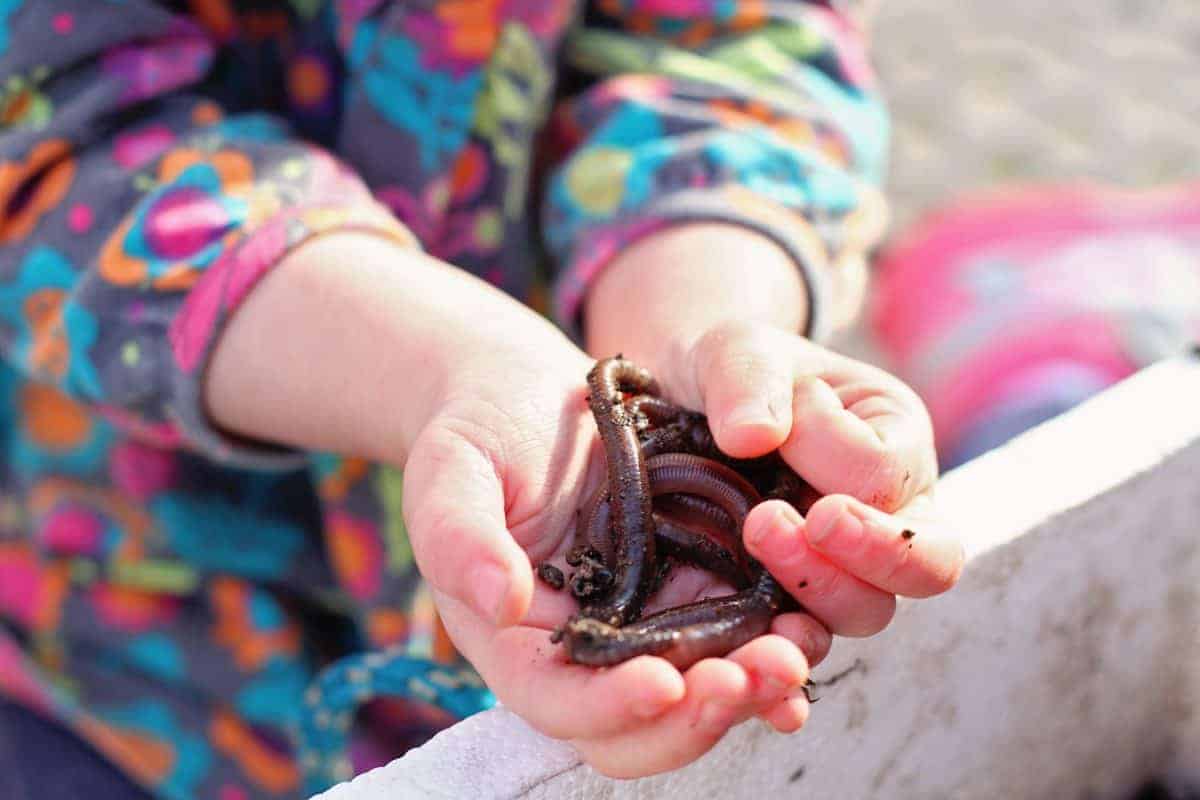
Whether you’d like to keep worms for composing, for your garden, for fishing bait or just as a science project to observe, creating a wormery with kids is a fun project that will teach them so much about nature and life right in their own backyard.









3 comments